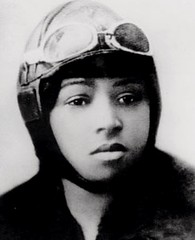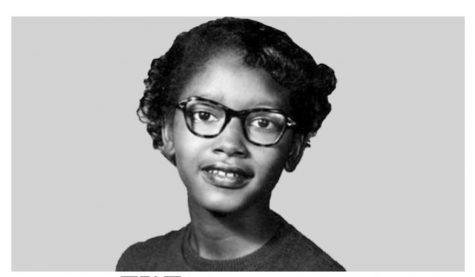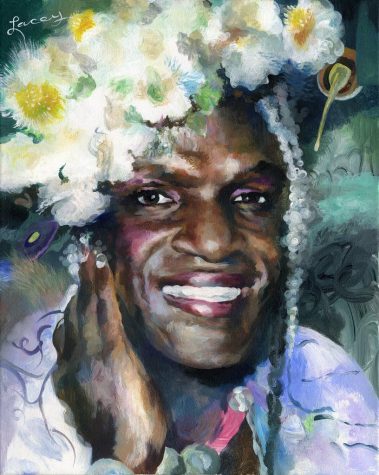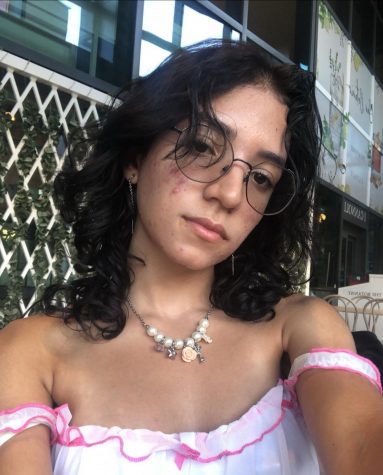Five African Americans that Changed the World
March 1, 2021
February has come to an end and with that comes the end of the Black History Month, a nationwide celebration of the work and efforts of African Americans who helped shape our country and culture. This month calls on Americans to reflect and acknowledge the achievements of those who were once barely acknowledged for their courageous actions and bright ideas.
We should continue to promote the stories of minority people who have done so much and yet receive so little credit more than one month out of the year. From mathematics to magnificent hair gel, here’s five African Americans that have made incredible strides to better the world we live in.
Gladys Mae West (1930-)
Gladys Mae West, or Dr. West, is a mathematician who helped in the calculations and computer programming of what we now know as the modern-day GPS. In a time where white men in segregated states mostly dominated her field of work, it was challenging for her to obtain a job; however, she was offered a position to work at the U.S Naval Weapons Laboratory in Dahlgren, Virginia, where she was the second Black woman and the fourth Black employee hired.
There, she was appointed as the team manager for SEASAT, the first earth-orbiting satellite designed for remote sensing of the Earth’s oceans; this project helped create the GEOSAT, which would eventually become the modern-day GPS. Next time you are using a GPS, thank Dr. West and her team for making this possible.
Bessie Coleman (1892-1926)
Bessie Coleman was an early American civil aviator and the first ever Black woman to gain an international permit to fly. She was inspired by stories she had heard from her brother about Frenchwomen flyers who served for France in World War I, and though she desperately wanted to study at a flight school, she would often get rejected by American schools for her skin tone and gender.

Consequently, she decided to study abroad in France. After she finished her studies and came back to America, she worked hard to save money so she could purchase her own airplane and eventually open a flying school. Though her dream of opening a flying school was never accomplished while she was alive, black aviators formed a network under her name to honor her accomplishments years later.
Garret A. Morgan (1877-1963)
Garret Morgan was an inventor, entrepreneur, and publisher who invented what would potentially become the hair straightening gel. He was born in Kentucky and only received elementary school education, though this did not prevent him from having his own business in 1907 and invent many other things during his lifetime. One of his major discoveries and inventions is the Breathing Hood, or the Gas Mask, which he invented trying to find a way a breathing device to protect firefighters against the smoke inhalation. This generated interest from the public and was most useful when helping rescue miners trapped beneath the Lake Erie.
He also worked to solve in modern-day problems such as traffic safety as he experienced with accidents with automobiles. That’s when in 1923, he improved the traffic lights by adding the yellow sign indicating for traffic to stop simultaneously. Other inventions include the curling comb, a women’s hat fastener, and a cigarette extinguisher. Nowadays we can see how much his inventions impacted our world and how necessary it is in day to day.
Claudette Colvin (1939- )
At only 15 years of age, and while sitting on a segregated city bus, Claudette Colvin decided to sit behind the seats already reserved for white people as an act of rebellion towards the discrimination against African Americans. She was then asked to give up her seat by the driver for a white person, but she refused, causing the police to arrest and charge her for disturbing the peace. Colvin was found guilty in court and became a ward of the state.

Her rebellious action led many people across her community to do the same, including Rosa Parks, who was the secretary of the NAACP at the time. Colvin paved the way for people like Rosa Parks to challenge bus segregation and other prejudicial practices against African Americans.
Through the help of black community leaders, Colvin became one of the plaintiffs in the court case Browder v. Gayle, in which four African American women challenged Alabama’s bus segregation laws. The plaintiffs won the case, and Colvin’s two charges were finally lifted.
Marsha P. Johnson (1945-1992)
Marsha P. Johnson or also known as “Saint of Christopher Street” was a transgender woman, a gay rights advocate, drag performer, a social activist and an advocate for trans people of color during the 1960s during the Gay Liberation Movement in New York. She had always wanted people like her to be free and have equal rights in the USA as cisgender people do. At only 23 years old, she became a key figure during the Stonewall riots, one of the many riots for LGBTQ rights happening in NYC and across America.

Marsha was known for her selfless actions even as she was dealing with mental illnesses and H.I.V, and for her brave actions during the protests and against the NYPD who would constantly target the gay community. She was the founding member of the Gay Liberation Front and co-founded the Street Transvestite Action Revolutionaries along her close friend Sylvia Riveria.
Marsha unfortunately was found dead in the Hudson River in 1992 after missing for six days and her cause of death remains undetermined. Her impact is still seen today as she is the inspiration of many who continue to advocate for gay rights.
There have been massive calls for social change in the United States in the past several years. From #MeToo to Black Lives Matter, we should be bringing light to the world’s problems and the ways we can solve them, and we should continue to honor those who have already done so much for the welfare of American society along the way.



